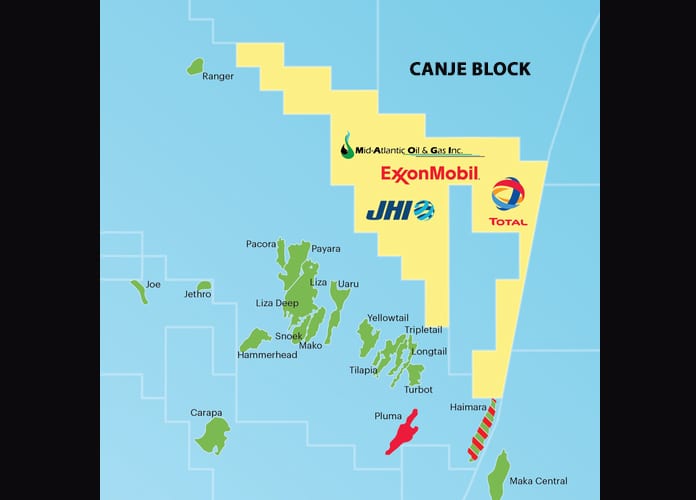The prolific Stabroek Block offshore Guyana has been described as the ‘block that keeps giving’ with 16 discoveries to date delivering more than 8 billion barrels of oil equivalent resources. Now, all eyes are on the adjacent Canje Block as explorers look to spud a well there potentially before the end of this year.
Back in 2016 a 6,100 km2 3D seismic survey was conducted on the Canje Block and this data has been used to define a substantial inventory targeting three initial prospects – Bulletwood, Jabillo, and Sapote. All are considered potential high-impact targets for the initial drill campaign.
Subject to government approvals, drillship availability and the impact of the COVID-19 pandemic, it is anticipated that the first well on the Canje Block – Bulletwood-1 – could be spudded in H2 2020, with the possibility of additional drilling by the end of the year.
The Canje Block lies 180km offshore Guyana in deep to ultra-deep water. Canje’s environment of deposition is unique among offshore Guyana blocks in that it contains both continental slope and basin floor terrain.
Most of the discoveries offshore Guyana to date have been made in the slope environment. Canje will be the first block offshore to test prospects on the basin floor – which have the potential to contain larger accumulations of recoverable hydrocarbons.
Consultancy group Wood Mackenzie has pointed out that with the global coronavirus pandemic and decline in oil prices, projects which have clear strategic drivers, robust economics and operators with strong balance sheets are advantaged.
“Advantaged deepwater oil in places like Guyana and Brazil, along with niche LNG – including low-cost greenfield and feedgas backfill at legacy liquefaction projects – will progress,” Rob Morris, from the consultancy group’s upstream research team, has said.
ExxonMobil is operator at the Canje Block with a 35% interest. Total holds 35%, JHI Associates, Inc. 17.5% and Mid-Atlantic Oil & Gas, Inc. 12.5%.



